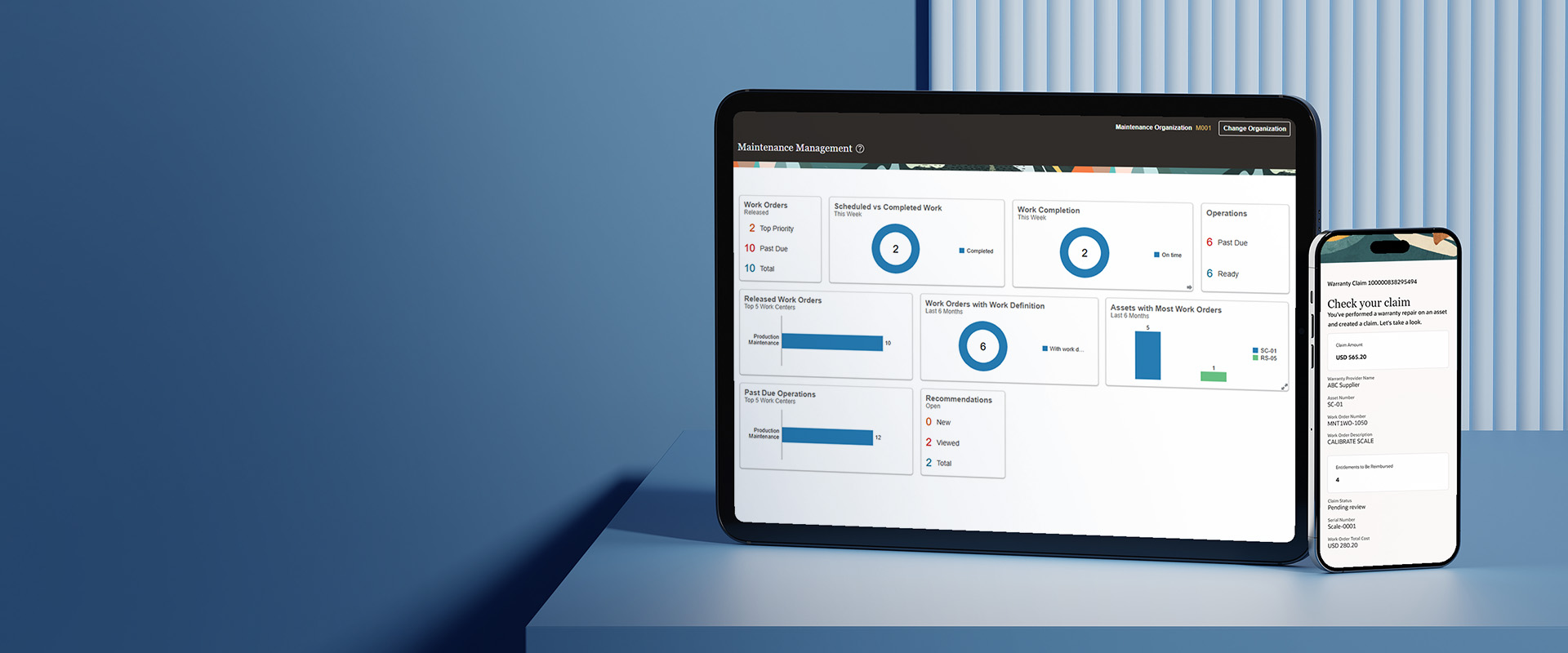Nowadays, almost all business processes are automated, and most businesses are running on many cloud applications. Over the last couple of decades, many applications have been introduced to the industry and have been adopted, which is growing at lightning speed. Some advantages are reduced man hours, improved accuracy, and the ability to connect anywhere, anytime, along with many others.
However, as we grow, the mesh of applications will become more complex, and there will be a need to connect these applications and allow them to talk to each other.
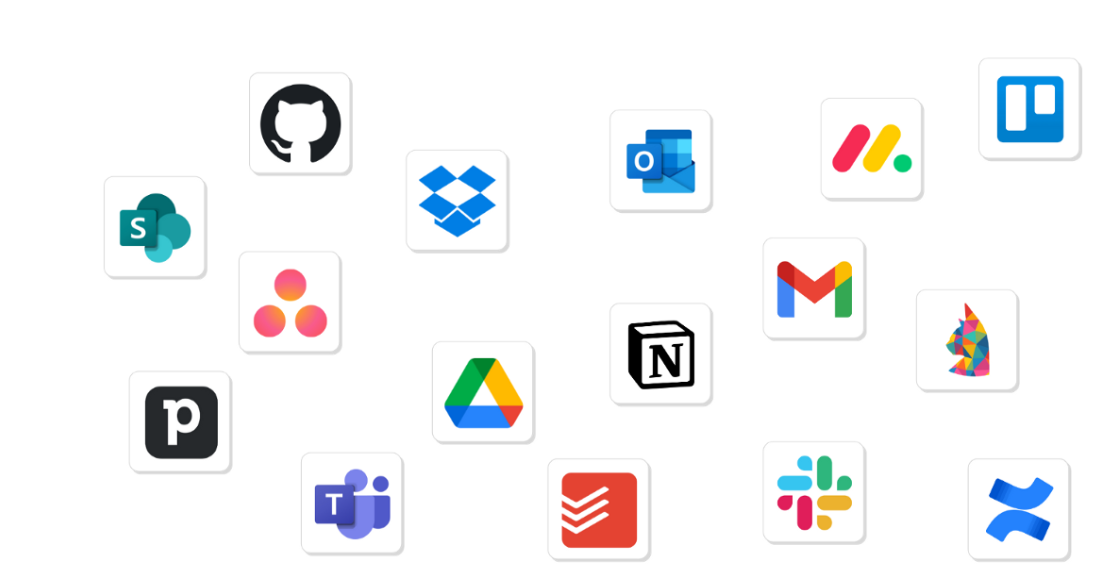
How can we have seamless integrations, and how will the data flow from cloud-to-cloud, on-prem to cloud, and vice versa? There are a couple of products on the market, and Oracle Integration Cloud (OIC) stands amongst them. Here are the advantages of why we opt for OIC and how Jade Global can help you to implement the best possible OIC features for you.
It’s simple to have a connection between all your applications with less effort.
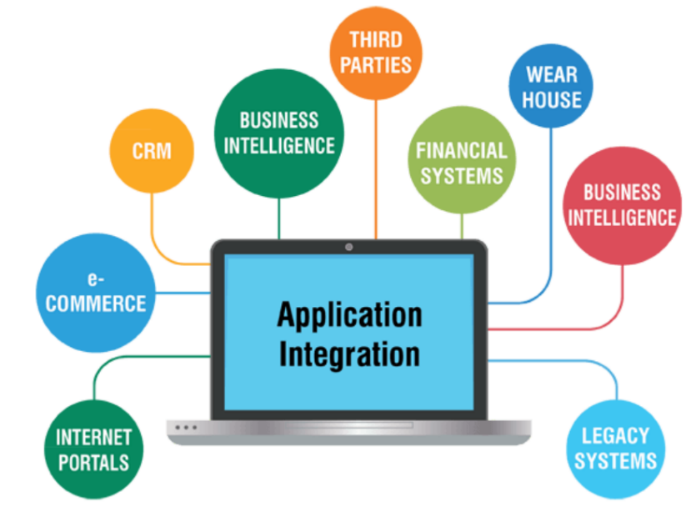
In 2015, Oracle released Oracle ICS to address this challenge and to deliver a cloud-based integration platform. ICS continued to transform, and in 2017, Oracle announced OIC as the next evolution in its integration capabilities.
So, what is OIC? OIC is a PaaS service available from Oracle within your OCI tenancy. OIC allows businesses to securely connect services and applications both on-prem and in the cloud, and through this, we can implement seamless integrations across various applications.
Under one OIC umbrella, you can get many things. Technically, it’s beneficial and easy to maintain.
- OIC delivers the following key functionalities:
- Oracle Integration Cloud Service
- Process Cloud Service
- Visual Builder Cloud Service
- Manage File Transfer Cloud Service
Oracle Integration Cloud Service:
This service enables us to define each source and target system to connect pre-built or custom adapters, and OIC is rich in adapters. Using these adapters/connectors, we can design our own orchestration and activate it to allow data to flow from source to target within a shorter amount of time.
All our integrations can be monitored and centralized with the OIC platform.
Key Features:
- Rich in Adapters (like Oracle Cloud ERP, Salesforce, Concur, Gmail, Workday, SAP, DocuSign, Meta, eBay, SNOW, FTP, SFTP, SOAP, and REST, etc.)
- Pre-built Templates
- iCal Expression
- Easy Mapping with XPATH Expression
- Enabled JavaScript
- B2B Pattern Communication
- Lookup
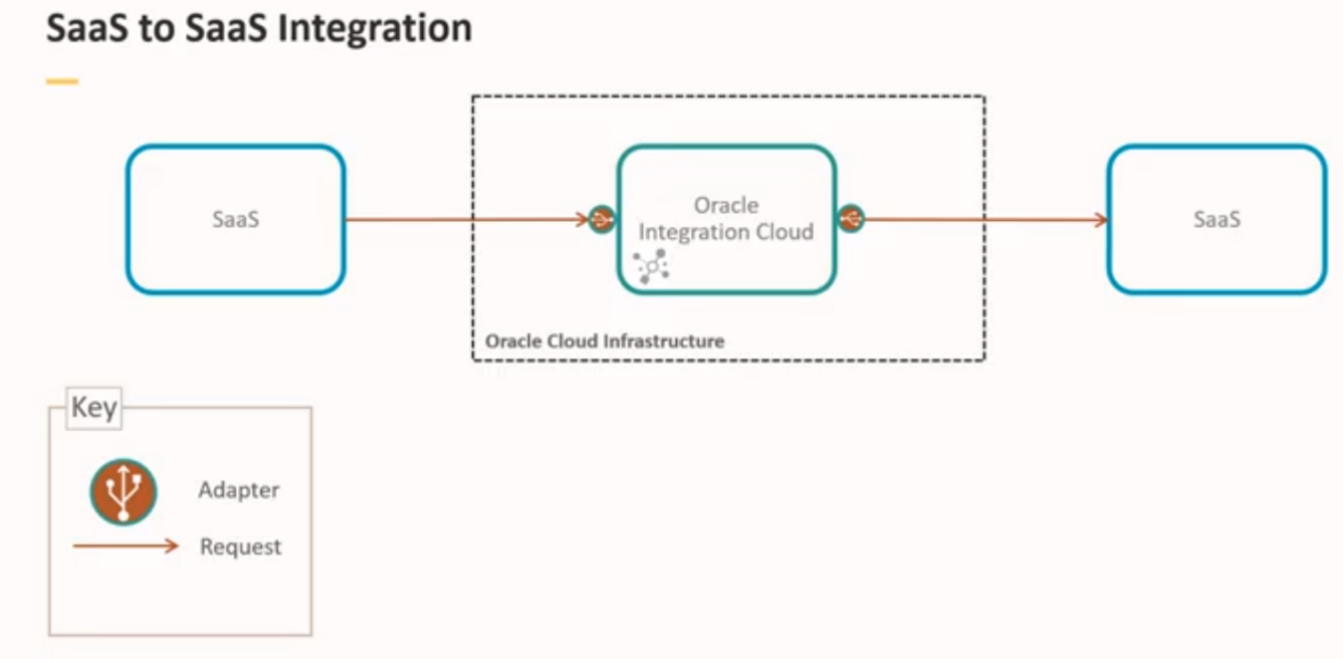
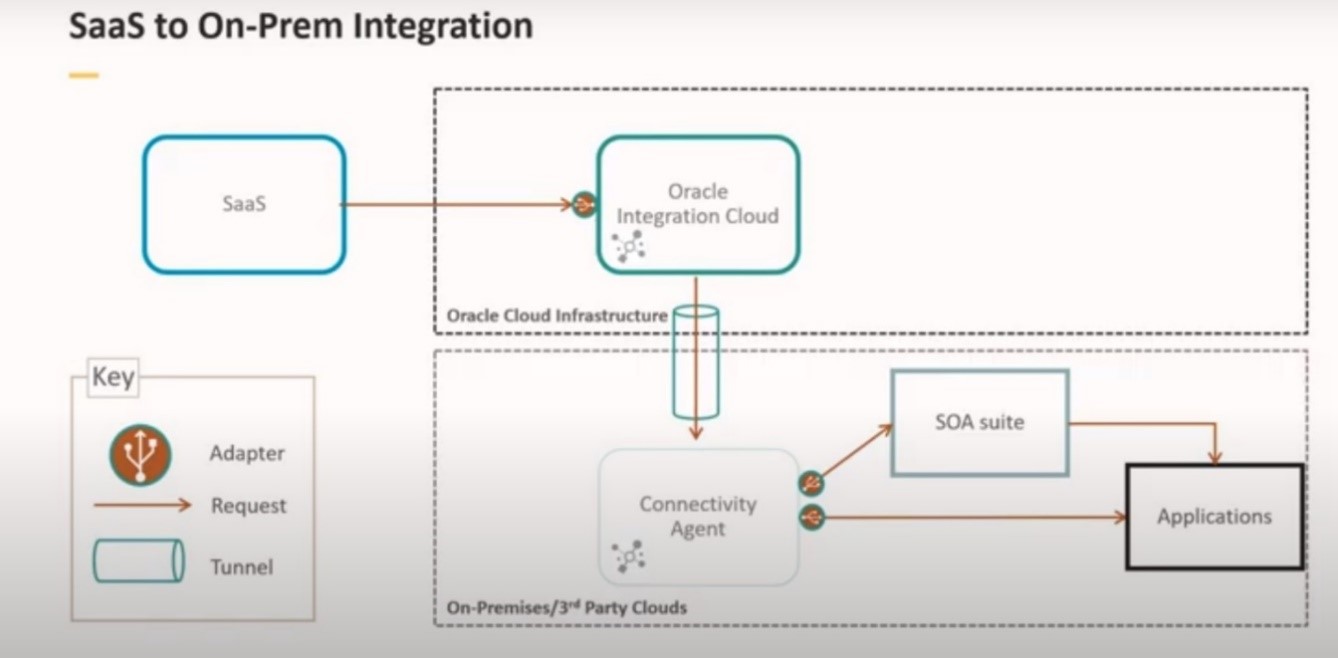
Process Cloud Service:
- Process Cloud Service mainly focuses on where businesses would like to have human intervention, such as approval flows like Leave Approval and PO Approval, etc. Using this service, we can rapidly build and automate the business process.
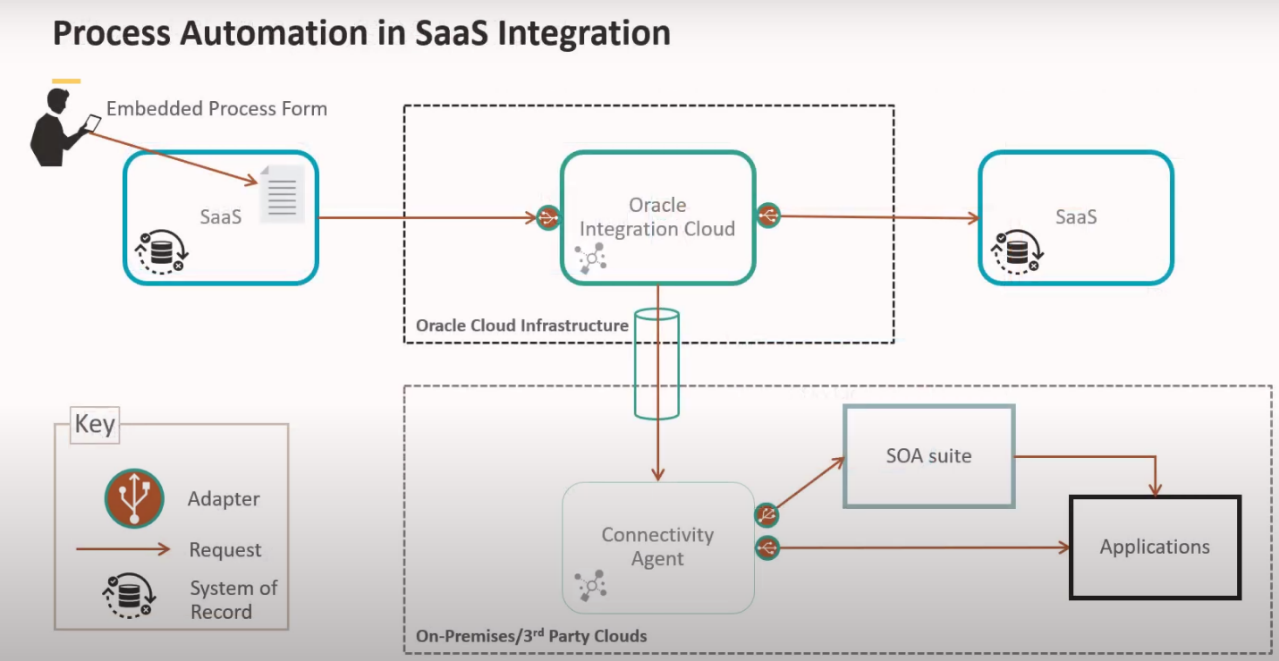
Visual Builder Cloud Service (VBCS):
- VBCS is mainly focused on UI design with a less-code/no-code strategy. We can quickly design, publish, customize web, and mobile applications tailored to our customers’ needs.
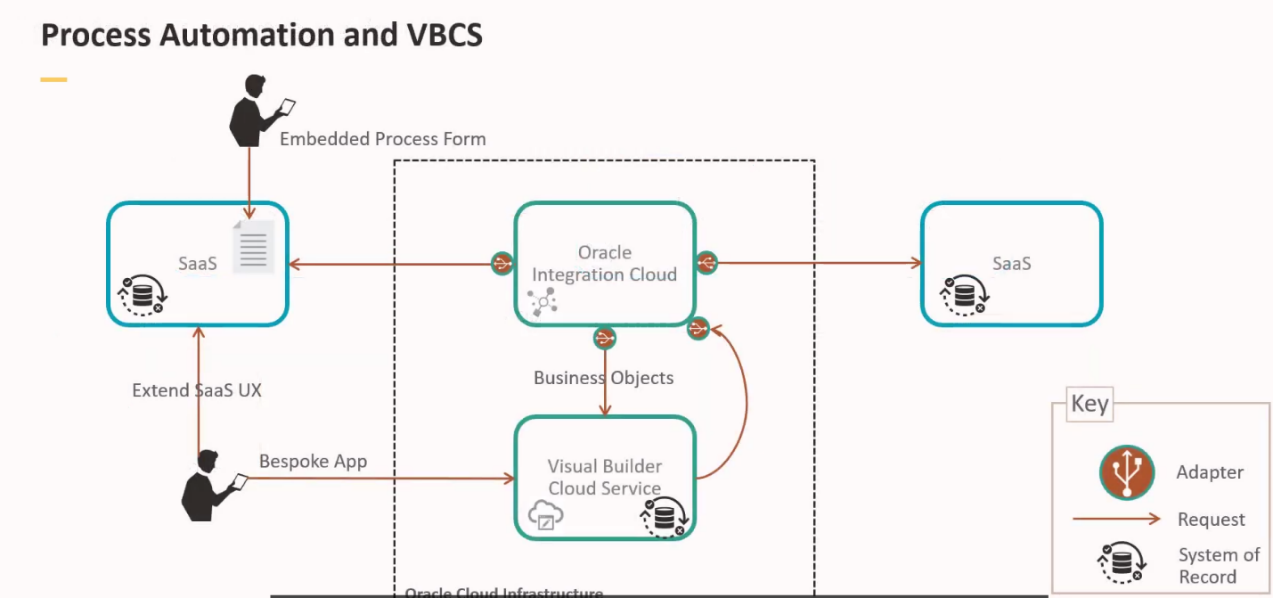
Manage File Transfer (MFT) Cloud Service (Separate License):
- Oracle MFT is a high-performance, standards-based, end-to-end managed file gateway. It features design, deployment, and monitoring of file transfers using a lightweight web-based design-time console that includes transfer prioritization, file encryption, scheduling, and embedded SFTP servers.
- There is always a requirement from businesses to process bulk data over month-end or year-end, and MFT is a useful service in this scenario.
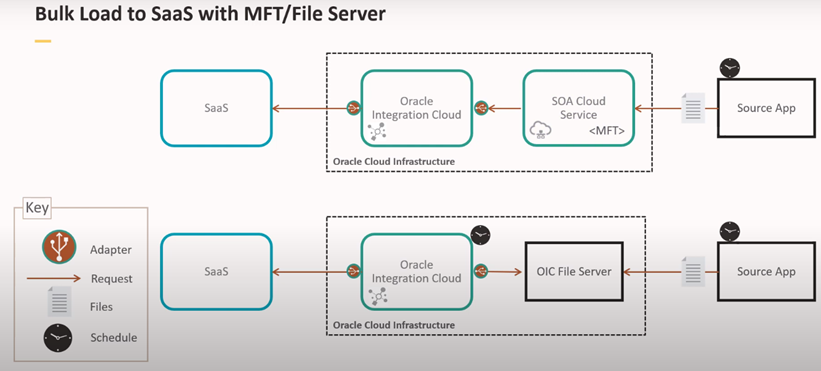
More on Integrations:
- There are a couple of patterns that we need to use while designing the integrations, and this will help deliver the best solution to your business.
OIC has provided the following key patterns:
- Real-Time App-Driven Integrations Flow – This pattern is normally used when we need to immediately sync or expose data when any business event has occurred, and most of the OIC adapters are capable of listening to business events. This pattern is also highly recommended for real-time data sync.
- Scheduled Integrations Flows – This pattern is normally used when we need to process data behind the scenes. It’s simply a CRON job that will automatically trigger per a standard or customized schedule, and we can attach your schedule to this type of integration. This type of integration is used in polling from OIC SFTP service, connecting to third-party systems using an adapter to sense eligible data, writing log or error records on SFTP server, and periodically notifying the status to the business, etc. Prebuilt OIC SFTP server is a key feature, and because of this, OIC stands out in the market.
- Publish to OIC/Subscribe to OIC – You can create integrations that enable you to publish messages to Oracle Integration, and integrations that enable you to subscribe to messages from Oracle Integration.
To publish messages to Oracle Integration Style, Oracle recommends that you create an app-driven orchestration integration and use an invoke to publish a message into the Oracle Cloud Infrastructure Service.
To subscribe to messages from Oracle Integration Style, Oracle recommends that you either use an app-driven orchestration integration with a trigger or a scheduled orchestration integration with a poll to retrieve published messages from the Oracle Cloud Infrastructure streaming service.
- File Transfer – This pattern is mostly recommended for file transfers across networks. Using this type of integration, you can move files to an FTP location or another.
OIC also gives the ability to leverage various key components delivered by OCI Gen2, such as:
- Object Storage.
- Oracle Functions.
- Oracle API Gateway.
Key Advantages:
- Provisioning of your OIC instance and setting up your tenancy is at your fingertips.
- OIC is tightly integrated with Oracle Cloud ERP; therefore, the SaaS application can be easily connected to the OIC platform, and data will flow seamlessly and securely.
- Almost no-code development.
- Rapid Implementation.
- End-to-end digital connects.
- User-friendly UI and easy to operate.
- Quickly connect to Oracle Cloud storage.
- OIC platform is enabled under SSO.
Key Standards:
- Leverage application capabilities to accept multiple records in a single request.
- Leverage adapter capabilities to send large datasets as attachments/files.
- Use a stage file action (the append to file option) - send the file to the destination at the end.
- Limit the number of files to process in a single scheduled run.
- Use schedule parameters to remember the last processed file for the next run.
- Use the Import Map feature in Oracle Integration for applications to communicate.
- Keeps metadata consistent and leverages validation.
- Optimize synchronous processing with a coarse-grained external API to replace multiple chatty calls.
- Have a custodian create needed connections and ensure duplicate connections of the same type are not created.
- Build an Oracle Integration Cloud Best Practice for naming conventions and maintaining a set of configurations.
- Download the file to the stage location using the Download File option. Stage files are secured and deleted after the instance.
- Use the Read File with Segments option. The platform automatically processes segments in parallel.
- Periodically analyze existing integrations/schedules against current business needs.
- Consolidate very similar integrations.
- Deactivate integrations that are no longer relevant.
- Adjust the schedules for integrations that need a lesser frequency and delete schedules no longer required.
- Use an asynchronous REST Adapter trigger instead of a scheduled trigger when an active schedule is not absolutely required.
- Spread schedules out over time to avoid schedule clusters.
- Do not create any long-running scheduled integrations (for example, a scheduled integration that takes longer than one hour to complete). This blocks scheduler resources, impacting other scheduled runs.
- Separate the integration into multiple integrations:
- Create a main parent integration that only receives/processes the data.
- Create separate child integrations to perform the individual outbound REST invocations.
Why Jade?
Jade is a certified Oracle Partner with rich experience in Oracle Cloud SaaS and PaaS implementations and customizations. We are certified OIC resources and have delivered numerous solutions across multiple industries such as e-commerce, life-science, semiconductor, and IT, etc.

Recent Accomplishments, OCI/OIC Implementations and Customizations:
Support and Enhancement of over 40 integrations that include many clouds and on-prem applications such as Oracle Cloud, Salesforce, Concur, Workday, Zurao, and Snowflake, etc.

Fresh OIC implementation. Created an OIC instance and designed and developed over 25 integrations. Enabled end-to-end digital connections between many SEMrush systems. For example, BambooHR Integration and Oracle to ADP integrations, etc.

Jade implemented the OIC PaaS platform and integrated many business processes at Dropbox with their Oracle Cloud ERP. We also implemented the ORDS service as per customer demand. Configured and enabled IDCS SSO and extended Oracle’s SaaS application with the help of PCS and VBCS. This helped Dropbox to monitor their assets and streamline the approval process.










